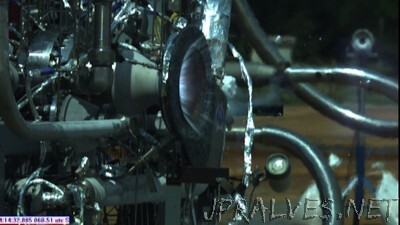
“Recent tests of a developmental rocket engine at NASA’s Marshall Space Flight Center in Huntsville, Alabama, produced all the performance data engineers were hoping for, along with the traditional fire and roar. But this engine is anything but traditional. Marshall engineers are designing each of the components from scratch to ultimately be made entirely by additive manufacturing, or 3-D printing, methods. The series of 12 test firings in late fall brought them a big step closer to that goal, said Andrew Hanks, test lead for the project. The fuel turbopump, fuel injector, valves and other major engine components used in the tests were 3-D printed, with the exception of the main combustion chamber. Previous testing of the engine parts used an ablative combustion chamber, which erodes during a burn, changing internal pressures and allowing only a 10-second firing time. The latest tests ran for 30 seconds and could have gone longer if needed, giving engineers a more realistic picture of what’s going on inside their developmental engine, which is designed to produce 35,000 pounds of thrust. The regeneratively cooled main combustion chamber used in the tests was of the Marshall team’s new design, but was machined in a traditional way. That allowed engineers to proceed with testing nearly all the pieces of their demonstrator engine design in place, for the first time providing data about how the parts perform together under the extreme temperatures and pressures of a long-duration burn.”
